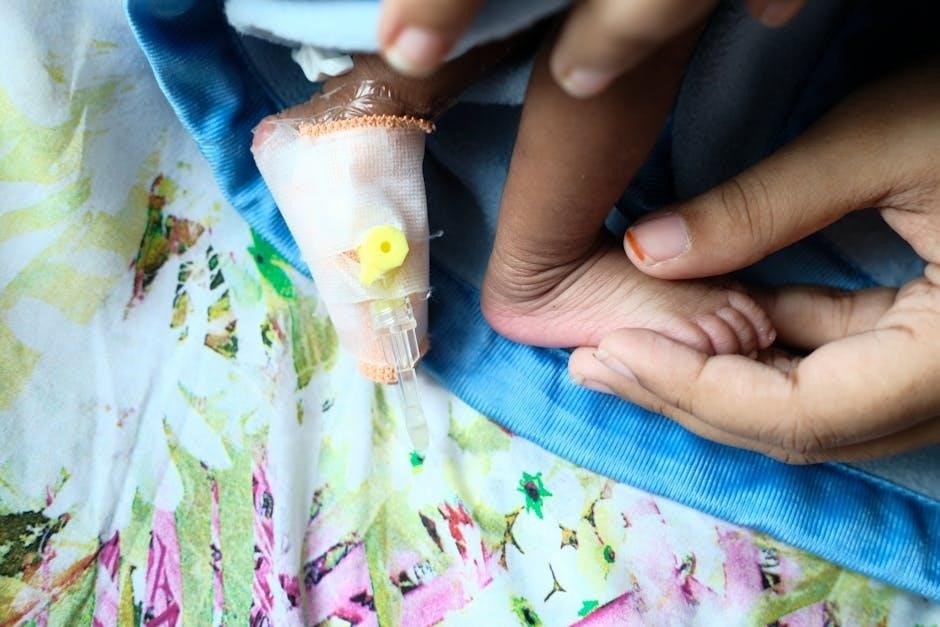club car accessories catalog pdf
The Club Car Accessories Catalog PDF is a comprehensive guide to enhancing your vehicle with genuine parts and accessories. It offers detailed customization options and performance upgrades to suit every need.
1.1. Overview of Club Car Vehicles
Club Car is a renowned manufacturer of small-wheel, zero-emissions electric vehicles, catering to golf, commercial, and recreational markets. With a rich history, the brand has become synonymous with reliability and innovation. Their vehicles, such as the iconic Onward and Carryall, are designed for versatility, offering solutions for both practical use and leisure activities. Club Car vehicles are widely used in golf courses, resorts, and industrial settings, emphasizing durability and performance. The company’s commitment to sustainability is evident in its electric-powered fleet, which reduces environmental impact. Known for their ergonomic design and user-friendly features, Club Car vehicles have become a preferred choice for individuals and businesses seeking efficient transportation. Their product lineup continues to evolve, incorporating advanced technologies to meet the demands of a modern world.
1.2. Importance of Accessories for Club Car Vehicles
Accessories play a vital role in enhancing the functionality, comfort, and personalization of Club Car vehicles. They allow owners to tailor their vehicles to specific needs, whether for golf, recreational use, or industrial applications. High-quality accessories not only improve performance but also protect the vehicle from wear and tear. For instance, items like windshields, storage solutions, and lighting systems can significantly enhance usability. Additionally, Club Car genuine accessories ensure compatibility and reliability, maintaining the vehicle’s overall integrity. Customization options, such as seats, wheels, and audio systems, enable owners to reflect their personal style. Investing in the right accessories can also boost safety, comfort, and efficiency, making the vehicle more versatile for various environments. By incorporating these enhancements, owners can optimize their Club Car experience, ensuring it meets their lifestyle and operational demands effectively.
Types of Accessories Available in the Catalog
The catalog offers a wide range of accessories to enhance functionality, customize, and improve the versatility of Club Car vehicles, including wheels, tires, seats, storage solutions, and audio systems.
2.1. Wheels and Tires
The Club Car Accessories Catalog PDF features an extensive selection of high-quality wheels and tires designed to enhance performance and style. From durable, all-terrain tires to sleek, modern wheel designs, these accessories provide versatility for various driving conditions. Options like the Atlas Gloss Black Wheels and Kraken Tires offer a perfect blend of durability and aesthetics, ensuring your vehicle stands out while maintaining optimal functionality. The catalog also includes DOT-approved tires for on-street use, delivering safety and reliability. Whether you’re looking for improved ground clearance, a sporty appearance, or enhanced traction, the catalog has a solution to meet your needs. With detailed descriptions and part numbers, selecting the right wheels and tires for your Club Car has never been easier. Upgrade your ride with accessories that combine style, performance, and durability.
2.2. Seats and Upholstery
The Club Car Accessories Catalog PDF offers a wide range of seats and upholstery options to enhance comfort and style. From premium bench seats to luxury stitched leather options, these accessories are designed to elevate your driving experience. The catalog features rear seat kits for added functionality, perfect for transporting passengers or cargo. Durable materials like vinyl and weather-resistant fabrics ensure long-lasting performance, even in harsh conditions. Customizable upholstery options allow you to personalize your vehicle’s interior, matching your unique style. Additionally, ergonomic designs provide superior comfort for drivers and passengers alike. Whether you’re seeking practicality or a touch of luxury, the catalog has a solution to transform your Club Car into a comfortable and visually appealing ride. Explore the variety of seats and upholstery options to find the perfect fit for your needs.
2.3. Storage Solutions
The Club Car Accessories Catalog PDF provides an array of innovative storage solutions to maximize the functionality of your vehicle. These accessories are designed to keep your belongings organized and within easy reach. From practical cargo boxes to versatile cooler attachments, the catalog offers options to suit various needs; Durable materials ensure these storage solutions withstand rigorous use, while sleek designs maintain your vehicle’s aesthetic appeal. Additionally, customizable organizers allow you to tailor storage to your specific requirements, whether for golfing essentials, tools, or personal items. By enhancing your Club Car’s storage capacity, you can enjoy a more convenient and clutter-free experience. Explore the diverse range of storage solutions in the catalog to find the perfect fit for your lifestyle and preferences.
2.4. Audio and Electronic Accessories
Enhance your Club Car experience with a wide range of premium audio and electronic accessories featured in the catalog. Discover high-quality sound systems, including Bluetooth-enabled speakers and subwoofers, designed to elevate your on-the-go entertainment. The catalog also offers advanced electronic features such as LED lighting systems, which combine safety with style, and state-of-the-art navigation tools to keep you connected and informed. For music lovers, marine-grade speakers and amplifiers provide crystal-clear sound, even in outdoor environments. Additionally, convenient accessories like USB charging ports and mounting systems ensure your devices stay powered and within reach. Whether you’re upgrading for performance or personal enjoyment, the Club Car Accessories Catalog PDF has everything you need to modernize and enhance your vehicle’s electronics. Explore these innovative solutions to create a tailored audio and electronic setup that matches your unique lifestyle.

Benefits of Using Club Car Genuine Accessories
Using Club Car Genuine Accessories ensures enhanced performance, perfect compatibility, and protects your warranty. They are designed specifically for your vehicle, guaranteeing durability and reliability in every component.

3.1. Enhanced Performance and Durability
Club Car Genuine Accessories are engineered to deliver enhanced performance and durability, ensuring your vehicle operates at its best. Designed specifically for Club Car models, these accessories are rigorously tested to meet high standards, guaranteeing reliability and longevity. Whether it’s improved traction with premium wheels and tires or superior comfort with upgraded seats, genuine accessories optimize your vehicle’s capabilities. LED lighting systems, for instance, not only enhance visibility but also add a stylish touch. Durability is a hallmark of Club Car Genuine Accessories, with materials and designs that withstand harsh conditions and extended use. By investing in genuine parts, you ensure your Club Car remains high-performing and long-lasting, maintaining its value and functionality over time.
3.2. Warranty and Compatibility Assurance
Club Car Genuine Accessories come with a warranty that ensures protection against defects in materials and workmanship, providing peace of mind for customers. These accessories are specifically designed to meet the exact specifications of Club Car vehicles, guaranteeing seamless compatibility. Proper installation of genuine parts ensures your vehicle’s warranty remains valid, avoiding potential issues that may arise from using non-OEM products. The warranty and compatibility assurance of Club Car Genuine Accessories means you can trust that every component will integrate perfectly with your vehicle, maintaining its performance and longevity. This commitment to quality and reliability makes genuine accessories the best choice for enhancing your Club Car while preserving its value and functionality over time.

How to Use the Club Car Accessories Catalog PDF
The Club Car Accessories Catalog PDF serves as a detailed guide to navigate through various sections, identify part numbers, and place orders efficiently for genuine accessories.

4.1. Navigating the Catalog Structure
The Club Car Accessories Catalog PDF is organized into clear sections for easy navigation. It begins with a Table of Contents, listing all categories and subcategories of accessories. Each section is further divided into specific product groups, such as wheels, seats, and storage solutions, making it simple to locate desired items. The catalog also includes an Index for quick reference, allowing users to search by keyword or part number. Detailed descriptions and high-quality images accompany each product, ensuring clarity and ease of selection. Additionally, the catalog features visual guides and diagrams to help users understand compatibility and installation requirements. By following the structured format, users can efficiently explore the vast range of accessories and find exactly what they need to customize or upgrade their Club Car vehicle. This user-friendly design ensures a seamless shopping experience.
4.2. Identifying Part Numbers and Descriptions
Each accessory in the Club Car Accessories Catalog PDF is clearly labeled with a unique part number and detailed description. The part numbers are systematically organized to correspond with specific products, making it easy to reference and order. Descriptions provide essential information, such as compatibility with Club Car models, material quality, and installation requirements. The catalog often includes tables or charts that list part numbers alongside corresponding product images and specifications. This helps users quickly identify the correct accessory for their vehicle. Additionally, the descriptions highlight key features and benefits, ensuring users can make informed decisions. By cross-referencing part numbers and descriptions, users can efficiently locate the exact accessories they need to enhance their Club Car’s performance or appearance. This organized approach simplifies the selection process and ensures accuracy when placing orders.
4.3. Placing Orders Using the Catalog
Placing orders using the Club Car Accessories Catalog PDF is a straightforward process. Once you identify the desired accessory, locate its part number and description. This information is essential for ensuring accuracy when submitting your order. The catalog is structured to help users quickly find the correct part numbers, which are often listed alongside product images and descriptions. After selecting your items, contact Club Car directly or visit an authorized dealer to place your order. Be sure to provide the exact part numbers to avoid errors. This method ensures you receive genuine Club Car accessories that are compatible with your vehicle. Additionally, the catalog may include pricing and availability details, making it easier to plan your purchase. Always verify the part numbers and descriptions before finalizing your order to ensure a seamless experience. This process guarantees you get the right accessories to enhance your Club Car’s performance and style.
Popular Accessories Featured in the Catalog
The catalog showcases a variety of popular Club Car accessories, including lift kits for enhanced ground clearance, LED lighting systems for improved visibility, and stylish wheels and tires for a personalized look.

5.1. Lift Kits for Enhanced Ground Clearance
Lift kits are among the most popular Club Car accessories, offering enhanced ground clearance for improved off-road performance and stability. These kits are designed to elevate your vehicle, providing better traction and maneuverability on uneven terrain. Available in various styles, including spindle and drop axle configurations, lift kits are easy to install and durable, ensuring long-lasting performance. They also allow for larger tire upgrades, further boosting your vehicle’s capabilities. Whether for recreational use or heavy-duty applications, lift kits are a practical and stylish upgrade. The catalog features a range of options to suit different needs, ensuring you can customize your Club Car to handle any adventure with confidence.
5.2. LED Lighting Systems for Safety and Style
LED lighting systems are a standout feature in the Club Car Accessories Catalog PDF, combining safety and style to elevate your vehicle’s performance and appearance. Designed to enhance visibility, these systems include LED headlights, taillights, and underbody lighting, ensuring your Club Car stands out on the road or course. With energy-efficient technology, LED lights provide bright illumination while minimizing power consumption. They are also built to last, offering durability against harsh weather conditions and heavy use. Available in various styles and configurations, LED lighting systems allow you to customize your vehicle’s look, whether you prefer a sleek, modern aesthetic or a bold, eye-catching design. These systems are easy to install and come with warranties, ensuring long-term reliability. Upgrade your Club Car with LED lighting for a safer, more stylish ride that turns heads wherever you go.

Customization Options for Your Club Car
Transform your Club Car into a personalized statement with a wide range of accessories. From stylish wheels and seats to functional storage solutions, you can tailor your vehicle to meet your unique preferences and lifestyle needs.
6.1. Personalizing Your Vehicle’s Appearance
Personalizing your Club Car allows you to create a unique and stylish vehicle that reflects your personality. With a variety of accessories available, you can customize every aspect of its appearance. Choose from a wide range of wheels and tires, each offering distinct designs and finishes to elevate your cart’s look. Seats and upholstery options come in various colors and materials, enabling you to match your vehicle’s interior to your preferences. Additionally, LED lighting systems provide both functionality and a modern aesthetic, while lift kits can enhance the overall stance and presence of your Club Car. These customizations not only improve the visual appeal but also ensure your vehicle stands out, making it a true reflection of your style and lifestyle.

6.2. Upgrading for Improved Performance
Upgrading your Club Car for improved performance involves enhancing key components to maximize speed, efficiency, and driving experience. Installing a high-performance motor or advanced controller can boost speed and torque, making your vehicle more powerful for various applications. Suspension upgrades improve handling and stability, ensuring a smoother ride and better control on uneven terrain. High-performance tires enhance traction and durability, providing optimal performance on different surfaces. These upgrades not only elevate your vehicle’s capabilities but also contribute to a more enjoyable and responsive driving experience. Investing in genuine Club Car accessories ensures each component is designed to work seamlessly with your vehicle, maintaining its performance and longevity. This approach guarantees compatibility and reliability, keeping your Club Car running at its best for years to come.
Maintenance and Care Tips for Accessories
Regular cleaning and inspections of Club Car accessories ensure longevity. Protect exterior components from harsh weather and use genuine Club Car products for maintenance. Store accessories properly during off-seasons.
7.1. Cleaning and Protecting Exterior Accessories
Regular cleaning is essential to maintain the appearance and functionality of Club Car exterior accessories. Use mild detergent and a soft cloth to wipe down surfaces, avoiding abrasive materials that may scratch finishes. Rinse thoroughly with clean water to remove dirt and debris. For durable protection, apply UV-resistant waxes or sealants to shield against sunlight and environmental elements. Avoid exposing accessories to harsh chemicals or extreme temperatures, as this can damage materials. Store accessories in a dry, shaded area when not in use to prevent fading or corrosion. Regular inspections can help identify wear or damage early, ensuring longevity. Proper care enhances both the aesthetic appeal and performance of your Club Car accessories, keeping your vehicle in prime condition for years to come.

Comparison of OEM vs. Aftermarket Accessories
OEM accessories ensure superior quality, reliability, and compatibility, often with warranty coverage. Aftermarket options may offer cost savings and unique customization but vary in quality and fitment.

8.1. Quality and Reliability Differences
Club Car OEM accessories are designed and tested specifically for Club Car vehicles, ensuring optimal performance, durability, and compatibility. These parts undergo rigorous quality control processes, guaranteeing reliability and longevity. In contrast, aftermarket accessories may vary significantly in quality, as they are produced by third-party manufacturers who may not adhere to the same standards. While aftermarket options can be more affordable, they may lack the precision engineering and material quality of OEM parts. Additionally, aftermarket accessories could potentially cause unintended wear or damage to other components, which is not covered under the Club Car warranty. For owners seeking long-term performance and peace of mind, OEM accessories are the recommended choice due to their superior quality, reliability, and warranty assurance.






























